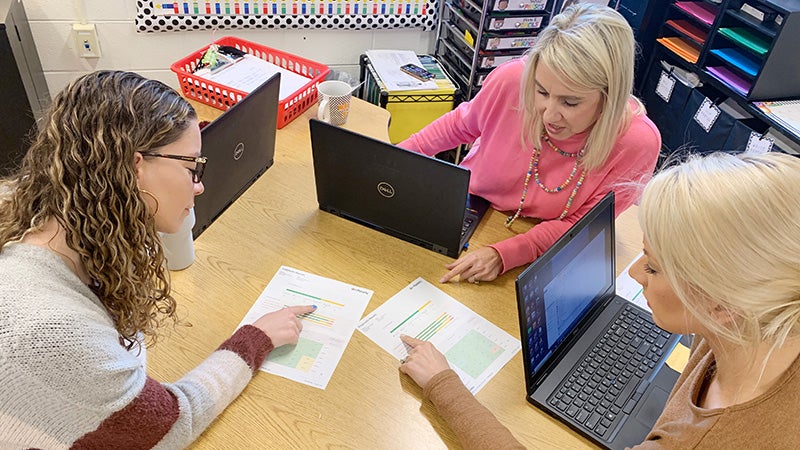PLC at Hollis Hand Elementary working to achieve student success
Published 11:30 am Thursday, March 9, 2023
|
Getting your Trinity Audio player ready...
|
Every week until the end of the 2022-2023 school year, The Troup County School System highlights a Professional Learning Community from a different school.
The Professional Learning Communities aims to meet regularly and discuss standards-based approaches, common assessments, student work, student-level data, interventions, and instructional improvement strategies.
This PLC highlight is from Hollis Hand Elementary School – Empowering Teachers and Engaging Students, written by Dr. Matt Body, Principal of Hollis Hand Elementary School.
The Hollis Hand third grade team is composed of four dynamic teachers. Mrs. Daniel and Mrs. Davis teach whole-group math, while Mrs. Terrell and Ms. Harris teach whole-group language arts.
The team has prioritized instruction and student achievement through purposeful, collaborative weekly meetings. Every week they have one PLC meeting and two grade-level meetings. The PLC meeting involves:
4 Breaking down content standards.
4 Analyzing student data.
4 Identifying the most effective instructional strategies to enhance student learning.
What does an HHE PLC meeting look like?
The third-grade team comes to the meeting prepared with pacing maps, common formative assessment, and classwork. They use these items to identify which students have mastered the standards or those which need remediation. The student’s performance on the standards predicates the teachers’ next week of instructional plans. For example, if most students did not master the ELA concepts taught in class, Mrs. Terrell or Mrs. Harris will spend time next week reteaching the standard to their students in whole group instruction. If only a few students struggle with the standards, they will focus on targeted small-group instruction with those students. Once the reteaching has been delivered, teachers will assign a new assessment to ascertain whether the students have mastered the standard or need additional remediation. This happens while teachers continue introducing new standards and skills to daily instruction. This tapestry of instructional practices challenges students with new standards while spiraling previously learned standards and revision opportunities into the daily schedule. At the following week’s PLC meeting, the team will discuss which standards to focus on and repeat the entire process with the next. The work is extremely intentional and nuanced, but it is paying dividends.
Is it Working?
HHE’s adoption and application of grade-level PLCs have been a successful endeavor. Our iReady diagnostic data this year has been extremely promising. Our ELA scores have risen significantly, and our math scores are the best in the county. This success has motivated us to continue meeting, looking at the data, and finding ways to improve our process. We are blessed to have amazing teachers and students at HHE. The PLCs have made us slow down and be more intentional with our instruction, and all the early indicators say it is working.
I have had a positive experience with PLCs as a teacher and an administrator. The insight that can be gained from sharing best practices amongst your peers is invaluable. Also, the impact you can have on a child’s learning when you know what they do and don’t understand is profound. The PLC process does that for Mrs. Daniel, Mrs. Terrell, Mrs. Davis, and Ms. Harris. It allows them to monitor what their students are learning, and we all know that what gets monitored gets measured, and what gets measured gets done. The 3rd-grade team is doing that at HHE — getting things done!



